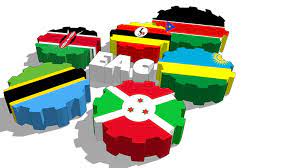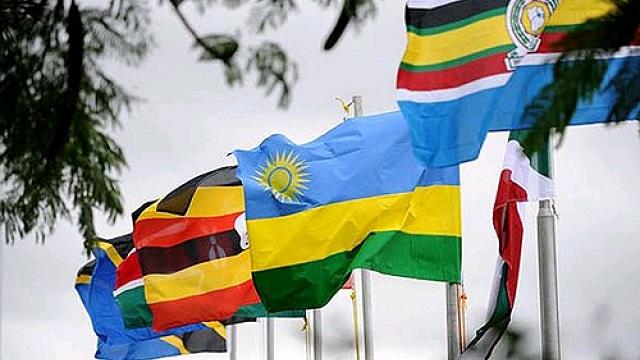
In 2019 alone, 156 kilometres of the highway were tendered for construction connecting the country with her neighbour Kenya. Strategically traversing several key areas like Tanga (a growing port city), Pangani (a tourist destination) Saadani (a major wildlife reserve) and Bagamoyo (the country’s largest inland port) the road is a major regional connector allowing for free movement of people and goods.
Constructed under the East African Community regional development project, the road is key to the much aspired regional integration and opens doors to the ports for Africa’s landlocked countries like Uganda, Rwanda and the DRC.
Owing to its importance, the African Development Bank and the Japan International Cooperation Agency (Jica) are among the project funders as well as the Tanzanian government itself through its own internal revenue.
Complete with spar roads, the highway will open up the enormous economic potential for each region it passes. On the other side of the border, the Kenyan government has also begun work on the connecting 40km project Mtwapa-Kilifi Road, part of the overall 460km Malindi-Tanga-Bagamoyo East African corridor development project.
This transnational highway between Kenya and Tanzania is estimated to cost a whopping U.S.$17.8 million and with over U.S.$16 million financing package for the project in 2020, its primary source of funds is the African Development Bank, followed by the European Union which that has chipped in U.S.$1.2 million along with other funders including the individual country governments.
Another is the Arusha-Holili/Taveta-Voi Road, which is yet another transport corridor for the East African region. This highway (length unconfirmed), links the region’s Northern Corridor at Voi in Kenya to the Central Corridor across the common border at Holili/Taveta passing through the tourist hub of Arusha in Tanzania.
Then you have the Malindi-Mombasa-Lunga and the Lunga/Horohoro-Tanga-Bagamoyo highways that strategically link the coastlines of Kenya and Tanzania further increasing tourist activities in the region as well as easing the movement of goods and people.
All these great infrastructure works require enormous amounts of funding. So where is the EAC getting money to fund these projects?
In September 2019, the East African Community (EAC) integration agenda got a jolt of support from the African Development Bank (AfDB) which pledged support for infrastructure and the region’s power connectivity.
“The AfDB rates EAC very highly. You are truly on course to the Community’s intended objective of transforming the region into a single market for all factors of production for enhanced welfare and economic prosperity of the people of East Africa,” local media quoted AfDB Regional Executive Director, Mr Cheptoo Amos Kipronoh.
Notably, according to the African Union (AU), the EAC is recognized as the most integrated bloc of the continent’s eight Regional Economic Communities (RECs).
EABC wades into Kenya, Uganda Non Tariff Barriers trade tiff
EAC Common Market: Non-Tariff Barriers
While the EAC partner states are exhibiting commendable commitment to the integration, there still remain a lot of bottlenecks to trade and even the movement of people. Certainly, the global pandemic greatly affected the ongoing integration efforts and mowed down great progress that was already achieved.
It is now up to the EAC Secretariat to fast track the removal of challenges to doing business. However, pundits are not very optimistic about the near future integration plans. “Whilst there is movement in political goodwill and actions are being taken in the right direction, it may be a while before the consequential benefits are observed by the traders in these member states,” warns Vruti Shah, an analyst with Bowman Law firm who are experts in the region’s integration processes.
It must be pointed out that despite goodwill talks between Kenyan and Tanzanian, actual on-ground changes are yet to be realized as bottlenecks continue to mar trade growth potential.
The International Monetary Fund has repeatedly called for the elimination of not only tariff barriers but non-tariff barriers as well. The IMF points out that doing so could double intra-regional trade in Africa.
“It is therefore crucial that in order for East African countries to unlock economic integration, efforts must be pushed towards eliminating non-tariff barriers as much as regular customs duties,” notes the IMF.
According to a report by the East African Research Fund, removing non-tariff barriers can potentially lead to an increase in Kenya and Uganda’s Gross Domestic Product by 0.5% not to mention the exponential growth of GDP across the entire EAC bloc.
Similarly, the United Nations Conference on Trade and Development also warns that ‘non-tariff barriers are at least three times more restrictive than regular customs duties.
What is certain is the fact that the removal of Non-tariff barriers must be the centre stage of all regional integration talks. To date, trucks get stuck at the border, even though there is commendable free movement of goods like maize and other staples. Removal of non-tariff barriers is the core of the intended common market.
While the integration works carry on, it is impressive to see the EAC bloc’s largest and fastest-growing economies working together. Kenya and Tanzania, respectively have so far exhibited exceptional sportsmanship despite each country being a competitor for the region’s largest economic status.
As matters stand, Kenya remains to be the largest and the most advanced economy not only in the EAC but also across Central Africa. The country is also well on a trajectory to maintain this status as it boasts a strong urban middle class and a vibrant value addition industry.
To date, Kenya holds the EAC’s second-largest population of 43 million and is growing at a rate of 2.7 per cent per annum. With the growing middle class, there is an increase in consumer demand for high-value goods which is further boosting the country’s mechanization agenda.
It is now estimated that as of 2050, 50 per cent of the population is expected to live in urban areas making the country a key target for the international trade of final products as well as the development of the countries own industries.
https://theexchange.africa/investing/africas-development/eac-seeking-to-enhance-market-access/
